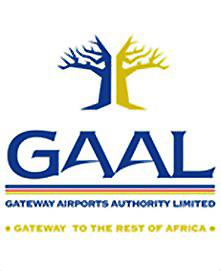
2 minute read
W
With the appointment of a new management team, a focus on restoration and improvements in infrastructure, the new face of Polokwane International Airport (PIA) is rapidly taking shape.
PIA is situated 9km north of the City of Polokwane and like some of the more-established airports in South Africa, it was previously an airforce base. The Limpopo Provincial Government took ownership of the converted facility in 1995. The Gateway Airport Authority Limited (GAAL) manages and operates the airport, together with other selected airports entrusted to the Limpopo Provincial Government.
Advertisement
The Limpopo government taking over the airport was the start of its journey towards a competitive civil-aviation infrastructure to be reckoned with. Although troubled with infrastructure failures and non-compliance issues in the past, the airport is now on its way to full recovery and becoming a true destination of choice for both passenger and cargo traffic.
The board quickly realised it was critical to appoint new senior management and fill critical key positions to enable maintenance of infrastructure and improving compliance with SACAA and ICAO requirements.
Infrastructure Improvements
Polokwane International Airport is equipped with two runways sufficient to accommodate large aircraft of the size of Boeing 747 and Airbus A346.
In the medium term, GAAL is planning to refurbish both runways 05/23 and 01/19 to improve the friction and strength of the runways. Runway 01/19 will also be extended by 1km to complete and join it with the taxiway and threshold that has already been built in anticipation of this extension. This will allow the airport to handle heavy cargo operations, which is the ultimate business objective set for 2024-2029.
The airport has an apron facility of 74 000 square metres of parking space and is able to accommodate nine B747-type aircraft and 13 B737/A321-type aircraft. Furthermore, the airport has 16 hangers of 540m² and one 6 450m² hangar, with the immediate potential of setting up multi-functional cargo facility.
Runway 05/23 is equipped with a runway-lighting system and it will soon be converted from halogen to LED lights, thereby reducing maintenance costs and improving reliability and availability.
This instrument runway is also equipped with a simple approach-lighting system to complement the RNAV procedure and to enable access to the airport in bad weather conditions. Plans are at an advanced stage to replace the current Precision
Matli, Acting CEO.
Approach Path Indicator (PAPI) system with an advanced LED PAPI system. This system enables the pilots to observe their approach path towards the runway and is critical in ensuring a safe landing. Compared to the old system, the new LED PAPI system has lower power consumption, clearer white/ red transition and an electronic angle display, thereby enhancing monitoring by ground electrical personnel without requiring sophisticated additional systems, a reduced calibration frequency and fail-safe built-in functionality to ensure out-of-tolerance automatic switch off.
Availability of aviation fuel is critical for airport operations. Currently the airport has outsourced the provision of JETA1 and AVGAS fuel. Furthermore, GAAL is in the process of refurbishing the one-million-litre-JetA1 Fuel Farm, with an associated 30 000-litre-AVGAS facility at the airport.

Airport Rescue and Fighting protection level is currently at category 7, meaning the airport can regularly service aircraft in the categories B737-800 and A320. GAAL has appointed a service provider to repair two of its additional major trucks, which will guarantee availability of the protection level ARFFS CAT 7 and enable the airport to meet the requirements of CAT 9, similar to airports such as Cape Town and OR Tambo.
Propelling Aviation Activities
Aviation activities are the core and heart of the airport and propelling and regenerating these activities talks to the existence and survival of an airport. Current aviation activity in both passenger and cargo terms is low. Short-term interventions which are in progress include:
• Promoting the airport as a diversion airport for major domestic and international operators from June 2023.
• Introduction of cargo operations from July 2023.
• Promoting the air service between Polokwane International and OR Tambo International Airports from June 2023 to improve number of passengers using the airport.
• Introducing an additional route between Polokwane and Cape Town by March 2024.










